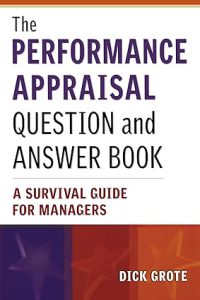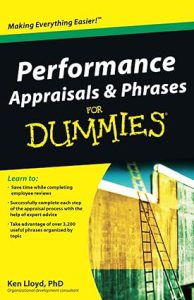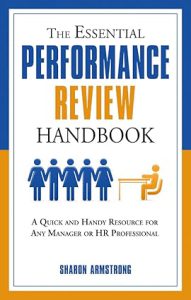Performance review stands out as the best approach to assess employee accomplishments. Performance reviews function as a barometer to both provide feedback and establish career advancement plans. A manager or team leader should help employees develop professionally by conducting performance reviews. Positive feedback will help you perform better. As a result staff members will achieve higher levels of engagement and motivation in their work tasks.
This blog post presents critical approaches and elite methods to conduct performance reviews that simultaneously inspire and motivate team members.
What is a performance review or performance appraisal?
A performance review or performance appraisal refers to a formal assessment conducted by an employer to evaluate the effectiveness of an employee’s work performance.
The performance review refers to the official evaluation process employers implement to measure employee job performance. The company’s performance management system incorporates this element with planning set at both annual and six-month intervals. While the specific process can vary among organizations, the primary objective remains consistent: The purpose of documenting employee performance involves noting their strengths and weak points and providing constructive feedback.
In The Performance Appraisal Question and Answer Book: A Survival Guide for Managers by Dick Grote, the author emphasizes the importance of constructive feedback as a crucial element of effective performance appraisals.
Here are some key points the book highlights about constructive feedback:
-
Balance Between Positive and Corrective Feedback
-
Constructive feedback should include both praise for strengths and guidance on areas for improvement.
-
Employees need to know what they are doing well to stay motivated while also understanding where they need to improve.
-
-
Specificity Over Generalization
-
Feedback should be clear, specific, and based on observable behaviors rather than vague statements.
-
Instead of saying, “You need to improve your communication skills,” a manager should say, “During the last team meeting, you interrupted a colleague twice, which affected the flow of discussion.”
-
-
Timeliness Matters
-
Feedback should be given regularly, not just during annual performance reviews.
-
Timely feedback helps employees correct issues before they become major problems.
-
-
Focusing on Behavior, Not Personality
-
Effective feedback should address an employee’s actions and results, not personal traits.
-
Example: Instead of saying, “You’re not a team player,” say, “I noticed you didn’t contribute during the brainstorming session. Your input would be valuable to the team.”
-
-
Encouraging Two-Way Dialogue
-
Constructive feedback should be interactive, allowing the employee to ask questions, clarify expectations, and share their perspective.
-
Managers should ask open-ended questions like, “How do you see this issue?” or “What support do you need to improve?”
-
-
Building a Culture of Continuous Feedback
-
Performance feedback should be a regular part of the work environment rather than a once-a-year event.
-
Ongoing feedback fosters growth and development while reducing anxiety around formal reviews.
-
What is the purpose of a performance appraisal?
Performance reviews aim to enable employees to discover their strengths and weaknesses which allows them to enhance their performance while receiving necessary support to reach their objectives along with additional benefits. The performance review system enables employers to recognize employees whose hard work and accomplishments warrant appreciation and rewards.
The performance appraisal process involves multiple important stages which include establishing performance targets followed by monitoring target achievement methods before providing feedback and evaluating the final performance outcomes. The review meeting includes the employee and their managers as they examine both achievements and problems encountered throughout the evaluation period.
A performance appraisal serves to review employee performance against organizational expectations and objectives. Any organization identifies evaluating employee performance as an essential component of its management processes. A performance evaluation aims to determine if staff members are fulfilling their job responsibilities and meeting established goals and objectives. The performance evaluation process exists to deliver honest performance reviews to employees which identifies development opportunities and helps employees improve their skills and knowledge to enhance organizational productivity.
Here are a few key reasons for performance appraisal:
- To ensure clarity of job roles and expectations: Performance review acts as a platform where supervisors and their employees discuss their responsibilities and expected performance standards. Providing employees with transparent goal-oriented expectations helps those subordinates understand what they need to do to perform their job and advance business progress.
- To provide feedback on performance: Employees can discover their resistance to work success through performance reviews. This data helps employees understand their successful actions and recognize areas that require their attention. The disclosure of such information helps employees recognize the significance of their work while motivating them to maintain high-performance standards.
- To identify training and development needs: Performance reviews function to detect areas where employees require additional training and development. This generates programs among the organizations. These programs function as tools for employee education and development within their professional domains.
- To set goals and objectives: Performance appraisal enables managers and employees to establish organizational goals which align with the company’s objectives. Through this system employees understand their tasks and how their contributions support organizational growth.
- To determine promotions and pay raises: The evaluation of employee performance serves as the primary determinant in decisions regarding promotions and salary increases. Employees who work diligently will likely receive promotion opportunities and salary improvements. Employees who do not meet performance standards receive improvement suggestions or enroll in remedial plans to help them advance.
During performance evaluations staff members must fully understand each other’s job roles and requirements to maintain a consistent evaluation standard. Through performance evaluation, supervisors can measure how well employees meet job expectations which encourages better work efforts from employees. Performance evaluations identify employee development needs while providing a roadmap for necessary training and development. The performance appraisal process creates synergy between individual ambitions and organizational targets through goal setting. These evaluations become essential when determining which employees receive promotions and pay increases. among employees in connection to their work.
What to Do Before the Review or Appraisal?
The necessary steps preceding the employee review or performance appraisal consist of evaluating training needs and developing paths to achieve desired outcomes.
The manager performance appraisal process helps him ensure shared understanding between employee objectives and organizational expectations. Employees must be clearly shown performance standards and behavioral expectations to meet crucial requirements. The onerous task of performance appraisal becomes challenging for some managers due to their lack of experience and conflicting goals between their team and the organization. Managers need to stay updated with current market trends to resolve this issue while sharing organizational goals with team members to obtain constructive feedback. When managers define objectives they offer their employees transparency about their skill development paths and future career directions.
In Performance Appraisals and Phrases For Dummies by Ken Lloyd, the author outlines several key steps to take before conducting a performance review or appraisal to ensure it is effective, fair, and productive. Here are the essential steps:
1. Gather Relevant Data and Documentation
-
Collect performance records, project reports, self-evaluations, peer feedback, and previous appraisals.
-
Use quantifiable metrics to assess performance objectively.
2. Review Goals and Expectations
-
Revisit the employee’s job description and performance goals set in the last review.
-
Ensure you have a clear understanding of what was expected versus what was achieved.
3. Identify Key Strengths and Areas for Improvement
-
Make a balanced assessment by noting both strengths and areas needing development.
-
Use specific examples of accomplishments and challenges.
4. Prepare Constructive Feedback and Examples
-
Plan your feedback using specific, actionable language.
-
Instead of saying, “You need to be more productive,” say, “Over the last quarter, you completed 5 out of 10 assigned projects on time. Let’s discuss ways to improve efficiency.”
5. Plan for a Two-Way Discussion
-
Anticipate the employee’s possible concerns or questions.
-
Be ready to listen actively and encourage the employee to share their perspective.
6. Set the Right Tone and Agenda
-
Approach the review as a collaborative conversation, not just an evaluation.
-
Outline the key points to discuss, such as achievements, challenges, career growth, and future expectations.
7. Schedule the Meeting at an Appropriate Time
-
Choose a time when both you and the employee can focus without distractions.
-
Avoid scheduling it at stressful moments (e.g., right before a deadline).
8. Prepare for Goal-Setting and Development Plans
-
Think about future objectives and how to align the employee’s growth with company goals.
-
Be ready to discuss training, mentorship, or opportunities for career advancement.
To effectively evaluate employee performance, managers can follow these steps: Managers should clearly establish expectations while gathering perspectives from multiple sources and demonstrate these expectations through practical examples then deliver constructive feedback while encouraging employees to reflect on their own performance before planning tailored development strategies alongside providing necessary resources followed by ongoing progress reviews and celebrating achievements. When these steps are implemented the performance appraisal process turns into an instrument that helps management and staff improve teamwork while enabling organizational growth.
Provide regular feedback throughout the year
The creation of a detailed performance evaluation process extends beyond a single mistake and continues throughout the entire year before repeating on an annual schedule. Employees who receive ongoing feedback maintain their focus and take timely corrective actions before the evaluation period. There are multiple methods to achieve this through scheduled meetings, casual office conversations or utilizing a performance management portal. Consistent feedback delivery will inspire employees to reach their full potential which results in more meaningful evaluation sessions.
Use objective criteria to evaluate performance
The critical nature of performance appraisals requires reliance on distinct quantitative measures to evaluate employee performance. Making decisions based only on personal preference is ineffective when specific observable criteria should guide decision making. When assessing performance it’s vital to consider their achievement of specific goals together with project completion times and their standard work procedures. The staff will receive assurance that their work evaluations depend on established norms and rules when they apply only objective criteria They gain psychological stability and develop excessive self-confidence which helps them achieve greater success.
Encourage self-evaluation and reflection
You need to establish an environment that motivates employees to embrace self-assessment and track their progress independently of your feedback. Such an approach will empower them to take ownership of task performance along with recognizing areas that require development. Guide them to concentrate on their strengths and develop an action plan to exploit their opportunity areas. Their performance reviews enable them to establish goals that will fulfill organizational requirements. The evaluation method that involves employee collaboration and contribution freedom leads to increased self-esteem which drives better performance from employees.
In The Essential Performance Review Handbook by Sharon Armstrong, the author emphasizes the importance of self-evaluation and reflection as a key component of an effective performance review process.
Here’s what the book highlights about this practice:
1. Promotes Employee Ownership of Performance
-
Encouraging employees to evaluate their own performance helps them take responsibility for their achievements and areas of improvement.
-
It fosters a sense of accountability and engagement in their professional development.
2. Encourages Honest Self-Assessment
-
Employees gain a chance to reflect on their strengths, accomplishments, and challenges before receiving feedback from their manager.
-
This process helps prevent surprises during the review, making it a more constructive discussion.
3. Identifies Perception Gaps Between Employees and Managers
-
Self-evaluations allow managers to see how an employee perceives their performance compared to their supervisor’s assessment.
-
If there is a major difference in views, it creates an opportunity for clarification and coaching.
4. Improves Two-Way Communication
-
Employees feel more involved in the review process when they have a voice in evaluating their own work.
-
It shifts the review from a one-sided judgment to a collaborative discussion about growth and development.
5. Helps Set Meaningful Goals
-
Through self-reflection, employees can identify personal and professional growth areas they want to focus on.
-
Managers can use these insights to align company goals with individual career aspirations.
6. Provides a Basis for Constructive Feedback
-
A well-structured self-evaluation helps managers tailor feedback based on the employee’s own insights.
-
It encourages employees to come prepared with examples of achievements, challenges, and areas where they seek improvement.
Tips for Encouraging Self-Evaluation (as suggested in the book):
-
Provide employees with a structured self-assessment form with clear questions.
-
Ask employees to list key accomplishments, challenges, and areas for development.
-
Encourage employees to use specific examples and data to support their self-assessment.
-
Use the self-evaluation as a starting point for the performance discussion rather than as a final verdict.
Focus on strengths and areas for improvement
A complete evaluation must incorporate employees’ strengths along with their weak areas to highlight the areas which require further development. By having ownership of their work employees discuss performance goals with their immediate supervisors through casual conversations and actively pursue areas of growth to advance professionally. Employees receive performance feedback that remains transparent while providing actionable examples that show how they can better achieve their objectives through supportive and constructive discussions. Providing feedback that uplifts and helps your employees will boost their workplace passion and energy.
5 must-read Books for Performance Review
- “The Performance Appraisal Question and Answer Book” by Dick Grote This book is an absolute manual and a powerful tool for successfully conducting performance appraisals. It has questions answered in a manner that people finding difficult to understand things. At outset, the piece discusses designing goals, offering feedback, dealing with tricky discussions and performing evaluation correctly. The writer offers managers and employees with practical guidelines as well as examples of real lives to assist both of them in the process of performance reviews.
- “2600 Phrases for Effective Performance Reviews” by Paul Falcone As its name suggests, this book has got a big list of the phrases that can be used when providing a response to the employees after the performance reviews. It contains statements for approving, thinking about and building up what is good, and searching, and linking it to progress and development. It is the true benefit for the bosses who are not so good at construction of sentences to write comments.
- “Performance Appraisals and Phrases For Dummies” by Ken Lloyd The book offers a clear and easy step-by-step guide to getting rid of the usual, stereotype performance appraisals and moving on to the productive type. This covers all things such as getting prepared, giving top priority, making the presentation of data good, and you record everything in a note. It is provided as well with many quotes and examples to enable you writing the feedback in a factual manner.
- “Effective Phrases for Performance Appraisals” by James E. Neal Jr. This book is loaded with good example statements and sentences that you can use when filling out employee performance review sections. As it provides you with some specific words for compliment and criticism, your speech is more clear. The book offers you a practical approach to this issue also by setting goals, planning and inspiring your employees to do their best.
- “The Essential Performance Review Handbook” by Sharon Armstrong This guidebook gives you practical tips and tools for doing performance reviews that work well. It talks about important things like making sure everyone knows what’s expected, giving helpful feedback, and dealing with problems in performance. The book also talks about how to handle any difficulties that might come up during the review process and gives you ideas for dealing with them. It’s a really helpful resource for both managers and employees who want to get better at doing performance appraisals.
Conclusion
Performance reviews serve as a valuable opportunity for both employees and employers to evaluate past accomplishments while planning future objectives. Performance reviews facilitate professional development by offering individuals both feedback and guidance. Both parties must engage in performance reviews with complete honesty and openness while maintaining a cooperative attitude to build a productive work environment.




